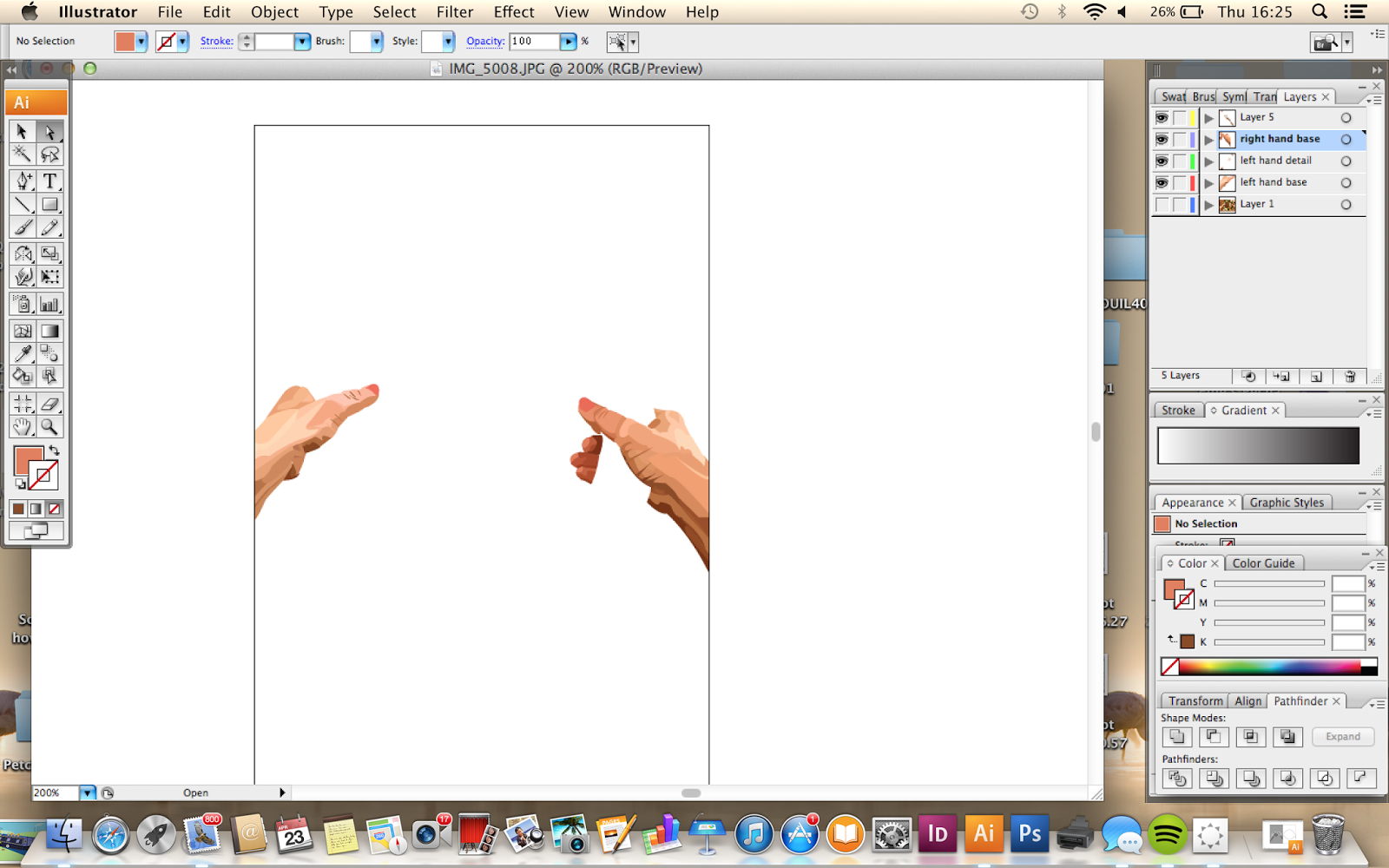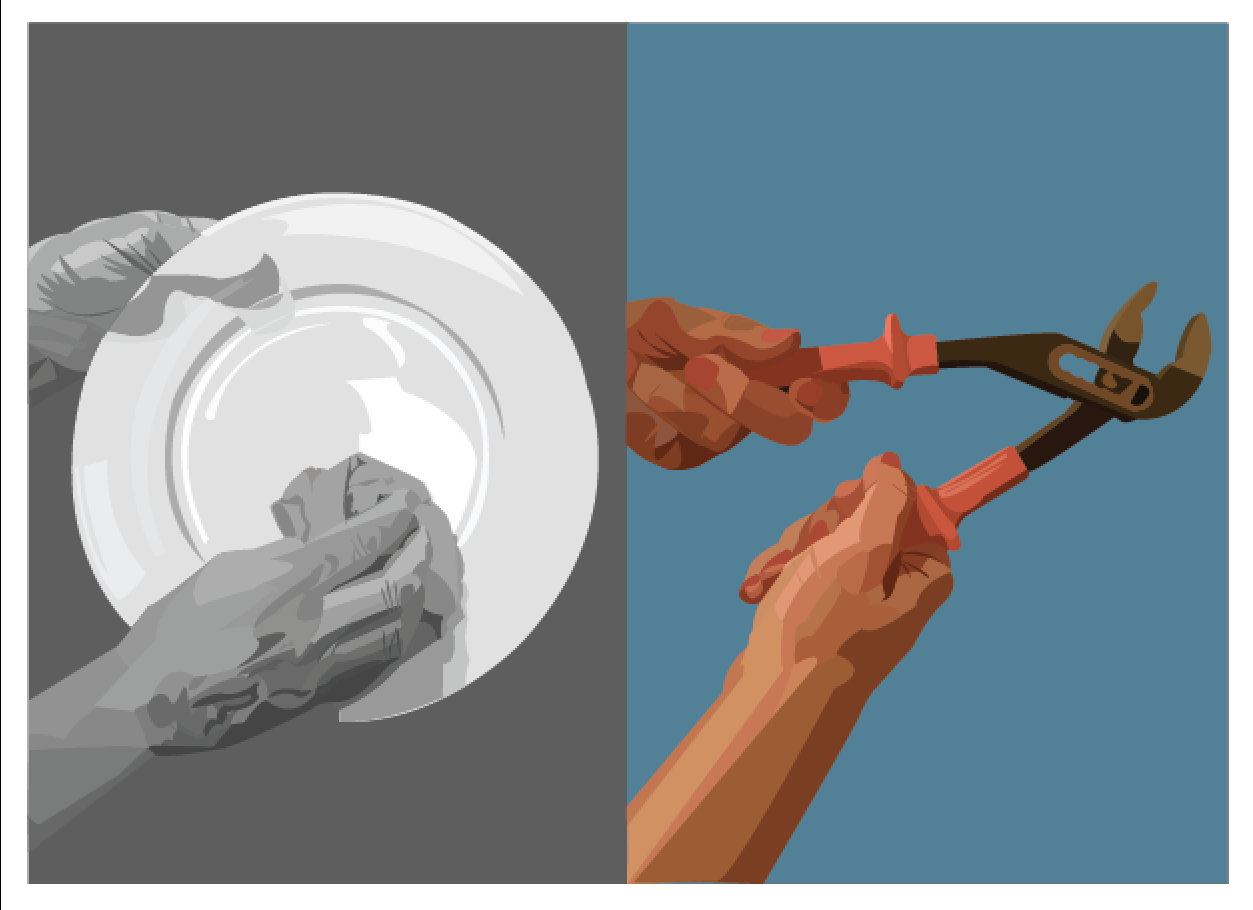In this module I have learnt how to make an animated GIF, and the basic principles of animation with looping a continuously moving image. I have also learnt how to use vectors as opposed to pixels, creating images by using flat shapes. Both have been extremely informative, interesting and enjoyable and have allowed me to become more confident and enthusiastic about using digital media in my work. I even chose to use vectors in the final brief, Persons of Note, because I enjoyed them so much and wanted to challenge myself further.
2. What approaches to/methods of image making have you developed and how have they informed your concept development process?
Digital image making has allowed me to create more perfected and professional outcomes, as opposed to hand rendered methods which can sometimes look a little less professional when the emphasis is on communication. With the aid of Photoshop and Illustrator, I have had the confidence to push my initial thoughts and concepts further. In 'I See Faces' I took my character drawings and by animating them in light hearted and humorous scenarios. In 'Greetings From', I filtered my knowledge of four different cities into specific themes and created compositions of recognisable elements to communicate to the viewer where the postcard was from with the use of flat shape created by vectors. Finally I continued to use vectors in 'Persons of Note' to inform my audience about the life of Amy Johnson in a more sophisticated way by exploring the treatment and attitudes of women in the 1930's, the appreciation of flying and the progression of Johnson's solo flights.
3. What strengths can you identify in your work and how have/will you capitalise on these?
I feel as if my main strengths are that my finished outcomes are very expressive in different ways. Throughout the production process I would always say to myself 'what do I want to communicate to my audience?' and allowed my work to develop in a way that would portray a really clear message and amplify the facts, feelings and information I wanted to get across.
Being thrown in at the deep end having to learn and adapt to using Illustrator, and also learning to animate still images in a short space of time has pushed me to be more ambitious by embracing digital techniques as opposed to shying away from them, staying in my usual hand rendered comfort zone. Choosing to use Illustrator in Persons of Note was a big step for me, as I would't usually put that sort of pressure on myself to produced finished work in a programme that I wasn't 100% confident with. However I am really pleased in what I achieved with my outcomes in that brief, and will continue to challenge myself in future briefs by throwing myself out of my comfort zone more often.
4. What weaknesses can you identify in your work and how will you address these in the future?
In general, I need to stop being so cautious when experimenting. I know full well that I don't do enough drawing for pleasure, and also in briefs because I am to much of a perfectionist, and am too impatient to finish my work on time. I must allow myself time to completely focus and exhaustively produce drawings based on my initial stimuli, and not being afraid to experiment with a range of different media. This is something that I always manage to fall short on, which leaves me less options when choosing the most effective form of media that will produce the best illustrations to communicate my message clearly. I have found using a large timetable really effective in terms of planning ahead long term, and tick-lists for every day short term tasks to complete. In the future I will definitely emphasise the importance of media testing on timetables and tick lists, hopefully resulting in the broadening of my developmental skills.
5. Identify five things that you will do differently next time and what do you expect to gain from doing these?
- Be even more speculative at the start of each brief. Take books out of the library, search the internet, look for any local work or exhibitions that will help me get off to a good start by being inspired.
- CALM DOWN, stop being so impatient and panicking about finishing on time. Allow more time for 'down time' so I don't burn out so quickly and feel exhausted.
- Continue to use a timetable and every day tick lists to manage competing tasks more efficiently and having manageable goals to work towards.
- Keep setting myself challenges to step outside my comfort zone by using methods and processes I am unfamiliar with. This way I will broaden my illustrative skills and knowledge.
- Make time to media test and enjoy drawing freely in relation to the subject matter. This will allow me to have more options when choosing a method to work in, and also develop my expressive understanding of the brief.
6.How would you grade yourself on the following areas:
(please indicate using an ‘x’)
5= excellent, 4 = very good, 3 = good, 2 = average, 1 = poor
Attendance-5
Punctuality-5
Motivation-4
Commitment-3
Quality of Work Produced-4
Quantity of Work Produced-3
Commitment to the Group-4
(please indicate using an ‘x’)
Attendance-5
Punctuality-5
Motivation-4
Commitment-3
Quality of Work Produced-4
Quantity of Work Produced-3
Commitment to the Group-4

































































